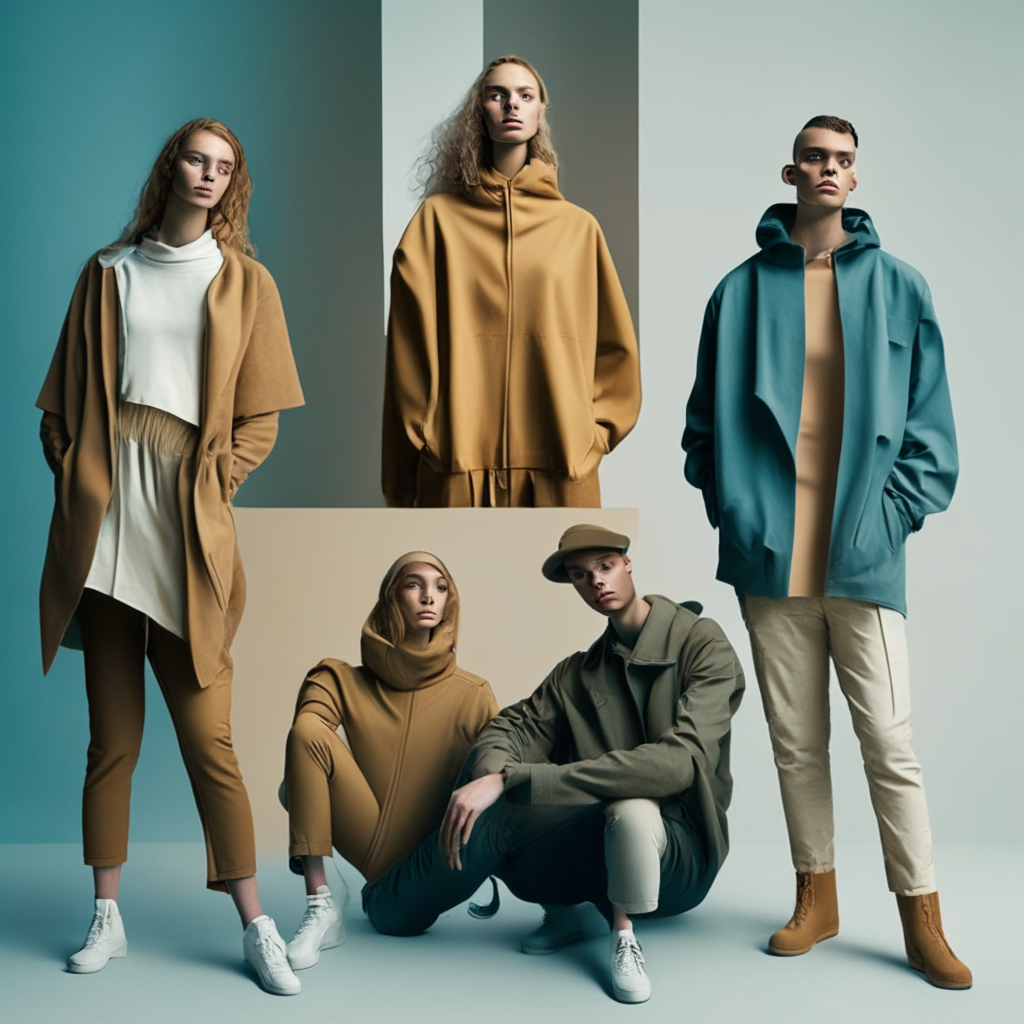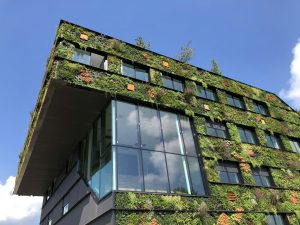Threads to Treads – The Journey of Your Clothes Reimagined
In an era where fashion trends transition faster than seasons, the enticing allure of fresh-off-the-ramp outfits is hard to resist. However, have you ever paused to contemplate the journey your clothes undertake? From a seedling of cotton to the glitzy racks at your favorite retail store, the lifecycle of a garment is not a fairytale. The journey comprises a slew of detrimental processes, including the utilization of harmful chemicals, excessive water consumption, and significant energy wastage, all contributing to environmental degradation. This trail also includes massive carbon emissions from the worldwide shipping of these fashion products, amplifying their carbon footprint.
Introducing the Panacea: Slow Fashion
For those infatuated with style, the solution isn’t about renouncing your designer ensembles or customized attires. The rescue from this environmental crisis is embedded in the philosophy of slow fashion. It’s a transformative approach that can change your wardrobe from being an environmental culprit to a responsible citizen of our planet!
Strutting Down the Slow Fashion Runway – The Essentials and Beyond
Slow fashion is a conscious, deliberate approach to producing and consuming fashion. It emphasizes quality over quantity, long-term value over short-term trends, and respect for people and the environment. Let’s dig deeper into the various essentials of this transformative fashion movement.
Environmentally Friendly Materials
In a world where many popular fabrics are synthetic and chemically treated, slow fashion prioritizes the use of natural, sustainable, and recycled materials. This shift in focus aims to reduce the environmental harm caused by the fashion industry.
Organic Cotton
Traditional cotton farming involves significant pesticide use, contributing to soil degradation and water contamination. Organic cotton, on the other hand, is grown without synthetic fertilizers or toxic pesticides. This not only supports biodiversity but also protects the health of farmers and local communities.
Bamboo
Unlike conventional fabrics like rayon that are heavily processed and polluting, bamboo is a more sustainable choice. This fast-growing plant requires less water and no pesticides, making it a renewable resource. Clothing made from bamboo is biodegradable and often softer than cotton, offering both environmental benefits and consumer comfort.
Recycled Polyester
Rather than letting plastic waste pile up in landfills and oceans, innovative companies are turning it into recycled polyester. This durable, versatile fabric breathes new life into discarded plastic bottles, helping reduce waste and save energy compared to virgin polyester production.
Ethical Manufacturing
An equally important aspect of slow fashion is ethical manufacturing. This means ensuring that the people involved in producing clothing are treated fairly and work in safe conditions.
Fair Wages
Slow fashion brands are committed to paying their workers a living wage, which is a significant departure from the norm in the global fashion industry. By supporting brands that prioritize fair wages, consumers can help create a more equitable system.
Safe Working Conditions
Another critical aspect of ethical manufacturing is providing safe, healthy working conditions. This means that factories are well-lit, clean, and safe and that workers are given appropriate protective equipment. This respect for human rights is a fundamental principle of slow fashion.
Reasonable Working Hours
Slow fashion also emphasizes reasonable working hours, ensuring workers have adequate rest and leisure time. This contrasts with the traditional fashion industry, where excessive overtime is often the norm.
Long-lasting Design
Unlike fast fashion’s focus on short-term trends, slow fashion values durable, timeless designs that will remain stylish and functional for years to come.
Timeless Styles
Slow fashion pieces are designed to be versatile and enduring, avoiding the cyclical trends of the fast fashion industry. By investing in timeless styles, consumers can build a durable wardrobe that won’t become outdated.
Quality Craftsmanship
Slow fashion emphasizes high-quality craftsmanship. Clothes are carefully constructed with attention to detail, resulting in garments that not only look better but also last longer.
Repair and Care
Part of the ethos of slow fashion is caring for clothing so it lasts. This includes washing items less frequently and at lower temperatures, and repairing them when they get worn or damaged. Brands may offer repair services, or even instructions on how to care for and mend their items.
Transparency
Slow fashion brands are open about their production processes, labor practices, and the origins of their materials. This transparency helps consumers make informed choices and supports accountability within the industry.
Traceable Supply Chain
Slow fashion brands often share details about their supply chains, so consumers can trace the journey of their clothes from field to closet. This transparency fosters accountability and allows consumers to make more informed decisions.
Third-Party Certifications
Many slow fashion brands have certifications from recognized bodies such as the Global Organic Textile Standard (GOTS), Fair Trade, or Cradle to Cradle. These labels provide an extra layer of reassurance about the brand’s commitment to ethical and environmental standards.
Inclusive Sizing
Inclusivity is another essential pillar of the slow fashion movement. Brands committed to slow fashion typically offer a wider range of sizes, ensuring that everyone can enjoy their products, irrespective of their body type.
Each of these elements contributes to the broader aim of slow fashion: to transform our relationship with clothes. By focusing on quality, sustainability, and ethics, slow fashion offers a viable alternative to the harmful practices of the mainstream fashion industry.
The Multifaceted Appeal of Stitching Sustainability into Your Wardrobe
Embracing slow fashion isn’t merely a philosophical shift. It brings along an array of tangible benefits that extend beyond the confines of your closet.
Sustainable clothes, owing to their premium quality, offer enhanced durability, providing better value for your money. Moreover, the emphasis on craftsmanship in slow fashion items means each piece is a work of art, meticulously crafted by artisans.
The assurance that your attire tells a positive story, one that doesn’t involve exploiting people or the planet, offers an unparalleled sense of satisfaction. It’s a way to express your personal style while staying aligned with your environmental values.
The Extended Guide to Eco-Chic Wardrobing
The transition towards sustainable fashion may appear challenging initially, but these practical tips can facilitate a smoother journey.
Know your brands
Transparency in their manufacturing process, source of materials, and labor practices is a hallmark of genuinely sustainable brands. Many brands today use marketing jargon to appear “green”, a practice known as ‘greenwashing’. To avoid this, it’s crucial to do your research and choose brands that provide clear and detailed information about their sustainability practices.
Buy second-hand
Thrift stores and second-hand platforms are treasure troves for finding unique pieces at a fraction of their original cost. It’s an excellent way to give a second life to clothes and prevent them from ending up in landfills.
Wash wisely
Your washing habits can play a significant role in promoting slow fashion. Washing clothes less frequently can prolong their life and save a considerable amount of water. Also, consider air-drying clothes instead of using a dryer, as it uses less energy and is gentler on your clothes.
Quality over quantity
Investing in fewer but higher-quality pieces can be more beneficial than owning a large number of low-quality items. These garments, made with better materials and craftsmanship, last longer and offer better value for money.
Recycle or donate
When you no longer need your clothes, consider donating or recycling them instead of throwing them away. It’s a way to reduce waste and extend the life of your garments.
More Ways to Engage in Slow Fashion
Slow fashion isn’t just about buying clothes from sustainable brands. It’s a comprehensive lifestyle shift that calls for informed decisions at every step of your fashion journey. Here are several key ways you can engage more deeply with the slow fashion movement.
Embracing Minimalism
Minimalism isn’t about having less; it’s about making room for more of what matters. By focusing on quality over quantity, you can curate a minimalist wardrobe that reflects your personal style without contributing to the cycle of overconsumption and waste.
Conscious Consumption
Conscious consumption is the first step towards minimalism. Before buying anything, ask yourself whether you need it, how often you’ll wear it, and how long it will last. This mindful approach can help you make better purchasing decisions.
Capsule Wardrobe
A capsule wardrobe is a collection of essential items that don’t go out of fashion and can be augmented with seasonal pieces. It encourages mix-and-matching and discourages impulse purchases, helping you get more use out of each item.
Thrifting and Vintage Shopping
Thrift and vintage shopping are great ways to find unique pieces while giving a second life to clothes that might otherwise end up in a landfill. Not to mention, it’s a great way to support local businesses and even charitable organizations.
Online Thrifting
If you prefer shopping online, numerous digital platforms facilitate the buying and selling of preloved items. Sites like Poshmark, Depop, and thredUP are fantastic avenues to explore thrifting from the comfort of your home.
Vintage Boutiques
For those who enjoy the thrill of the hunt, exploring local vintage boutiques can uncover rare gems with rich history. These unique pieces can give your wardrobe an individual flair that new clothes can’t replicate.
Clothes Swapping
Clothes swapping is a fun, free way to update your wardrobe. You get to pass on items you no longer need and bring home something new-to-you.
Organize a Swap Party
Hosting a swap party can be a great way to socialize with friends while refreshing your closet. Each guest brings items they no longer wear, and everyone gets to pick something new to take home.
Online Swapping Platforms
Online platforms like Swap Society offer a larger pool of potential swaps. These sites allow you to swap clothes with people from different parts of the world, broadening your choices.
Custom Tailoring
Investing in custom-tailored pieces ensures a perfect fit, which can help you get more wear out of each item. Plus, custom tailoring is a great way to support local artisans and promote traditional craftsmanship.
Bespoke Clothing
Bespoke clothing is designed and tailored to the client’s exact measurements and style preferences. While this option may be more expensive upfront, the longevity and fit of bespoke pieces make them a wise investment.
Alterations
Altering off-the-rack items to fit better can also extend their life. Whether it’s adjusting the length of a dress or the waist of a pair of pants, these minor changes can make a big difference in how often you wear an item.
Conclusion – Be the Change You Wish to See in Fashion
Slow fashion is not just a trend, but a transformative lifestyle choice. It’s about shifting your mindset from consumerism to conservationism, from quantity to quality, and from carelessness to mindfulness. It encourages us to respect the resources we have, the hands that make our clothes, and the planet that sustains us all.
Every small step towards slow fashion counts. Whether it’s buying less and choosing well, mending over discarding, swapping instead of shopping, or supporting brands with sustainable practices, each action helps pave the way for a more sustainable fashion future.
The fashion industry is one of the world’s largest polluters, but it also has the potential to be a significant part of the solution to environmental and ethical issues. By embracing slow fashion, we all can play a role in this transformative journey. After all, true style lies not just in how we dress but also in the choices we make. It’s about creating a wardrobe that tells a story of respect – for people, for craftsmanship, and for the Earth itself.
So, are you ready to walk the path of sustainability and stitch a new narrative into your style? Remember, every stitch in the fabric of slow fashion is a step towards a greener and more equitable world.
Why You Should Stitch Sustainability into Your Wardrobe
“But why should I go green with my fashion choices?” Well, besides the satisfaction of helping save the planet one t-shirt at a time, there are other perks too.
Sustainable clothes are often more durable, so you get more wear for your money. You can also experience a newfound appreciation for craftsmanship, as many slow-fashion pieces are made by artisans who pour their hearts into their work. Lastly, and perhaps most importantly, there’s a unique joy in knowing your clothing tells a story that doesn’t involve exploiting people or the planet.
So, ready to take your first step on the green catwalk?
Your Guide to Eco-Chic Wardrobing
Navigating slow fashion can be like trying to find a sequin in a haystack, but here are some tips to help you start your journey.
- Know your brands: Look for brands that are transparent about their manufacturing process. If their website doesn’t shout about their sustainable practices, they probably don’t have any.
- Buy second-hand: Thrifting isn’t just for hipsters anymore! It’s like a treasure hunt where the prize is a unique addition to your wardrobe and a happy planet.
- Wash wisely: Did you know washing your clothes less often can make them last longer and save water? Unless you’re auditioning for a detergent ad, consider cutting back on the washes.
- Quality over quantity: Invest in durable, classic pieces rather than disposable fashion. Your wallet and the planet will thank you.
- Recycle or donate: Got clothes you no longer wear? Give them a second chance at life by donating or recycling them. One person’s fashion faux pas can be another’s masterpiece!
So, there you have it, folks! Slow fashion is not only the future but also the present. It’s a journey of conscious choices, helping you weave a greener narrative into your style. Because when you think about it, isn’t the chicest thing you can wear the assurance that you’ve made a difference?
FAQs
What is slow fashion?
Slow fashion refers to the creation of clothes, shoes, and accessories in ways that are environmentally friendly, socially responsible, and resource-efficient. It focuses on reducing negative impacts on the environment and improving the working conditions and livelihoods of workers in the fashion industry.
Why should I opt for slow fashion?
Choosing slow fashion is a step towards environmental conservation and social justice. It supports better practices in the fashion industry, including the use of eco-friendly materials, ethical labor practices, and reducing waste. Plus, slow fashion pieces often have a timeless design and superior durability.
How can I identify a slow fashion brand?
Sustainable brands are usually transparent about their manufacturing processes, sources of materials, and labor conditions. They often have certifications from recognized bodies such as the Global Organic Textile Standard (GOTS), Fair Trade, or Cradle to Cradle.
What are some ways to practice slow fashion?
Some ways include buying from sustainable brands, choosing second-hand or vintage items, caring for and repairing your clothes to make them last longer, and recycling or donating unwanted clothes.
Can slow fashion be stylish?
Absolutely! Slow fashion doesn’t mean compromising on style. Many sustainable brands offer chic, trendy pieces that allow you to be stylish and environmentally conscious at the same time. Fashion is an expression of personal style and values, so what better way to show your commitment to the environment?




